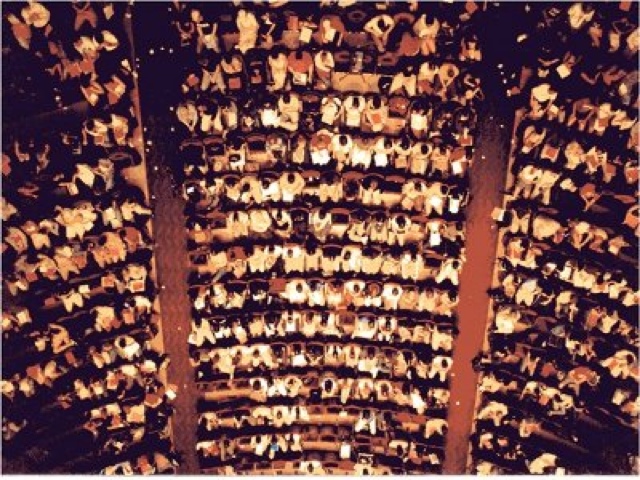Funny to have this assigned as reading, just as I was considering how one can make the audience not just intellectually complicit in the theatre act, but physically so. I have been thinking about what happens if scenes are staged entirely in the dark? Or entirely lit, audience too? Or with mirrors behind the actors so the audience see not only the fronts, but the backs of the actor, and themselves?
Crouch's play takes my musings to an amazing level of actualization; the 4 characters sit among the audience, with no real stage space, talking sometimes in full dark or full light, or bathing the audience in "stage" light. This is a meditation on the active role that audience/actor/writer play each and every time the play is performed, and the impact this can have. The play discussed here is extreme, clearly for effect...but one can extrapolate the implication that any play does (and should!) have this effect to some degree.
I couldn't help but consider that producing this play would not be possible in traditional theatre spaces. Or could it? An empty stage, while the house is lit and the lines come from the house? The presence of that empty space would create a 5th character, which I think might change the implications of Crouch's play.
Crouch's play takes my musings to an amazing level of actualization; the 4 characters sit among the audience, with no real stage space, talking sometimes in full dark or full light, or bathing the audience in "stage" light. This is a meditation on the active role that audience/actor/writer play each and every time the play is performed, and the impact this can have. The play discussed here is extreme, clearly for effect...but one can extrapolate the implication that any play does (and should!) have this effect to some degree.
I couldn't help but consider that producing this play would not be possible in traditional theatre spaces. Or could it? An empty stage, while the house is lit and the lines come from the house? The presence of that empty space would create a 5th character, which I think might change the implications of Crouch's play.


